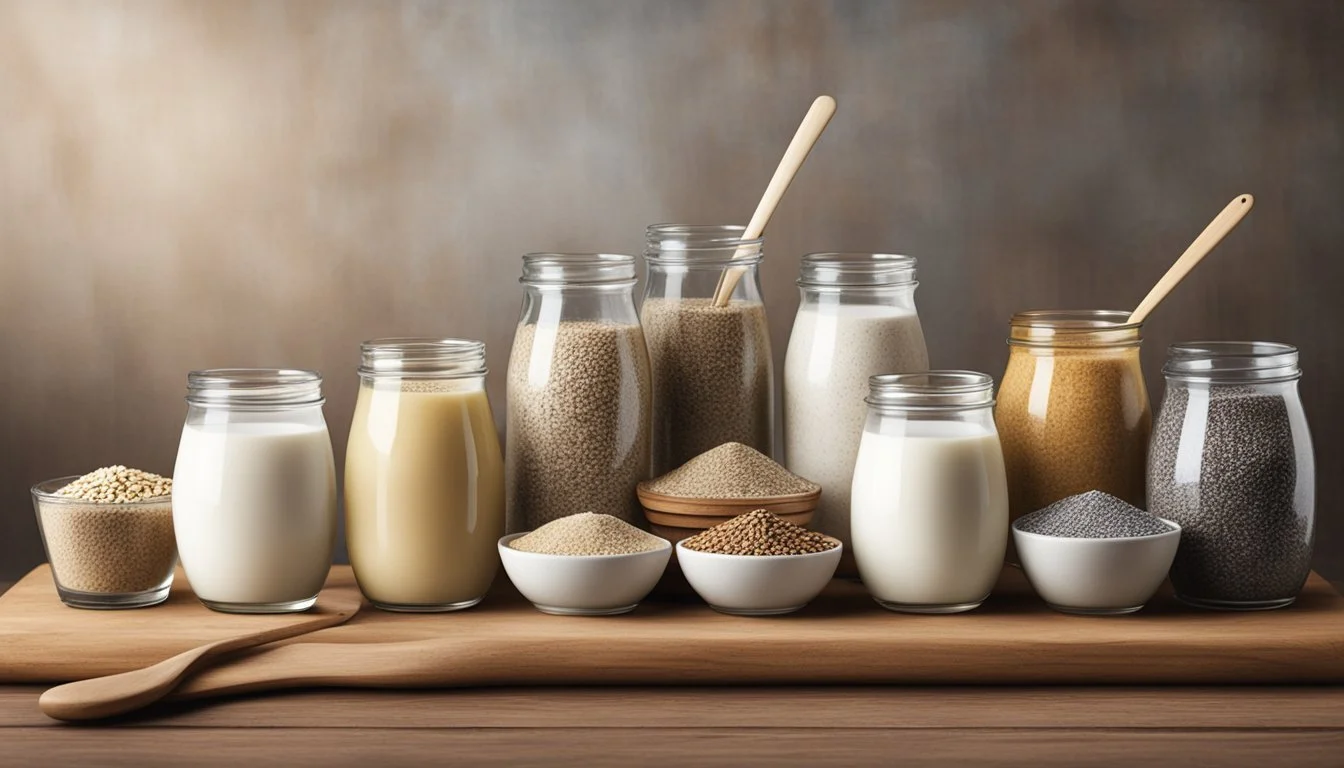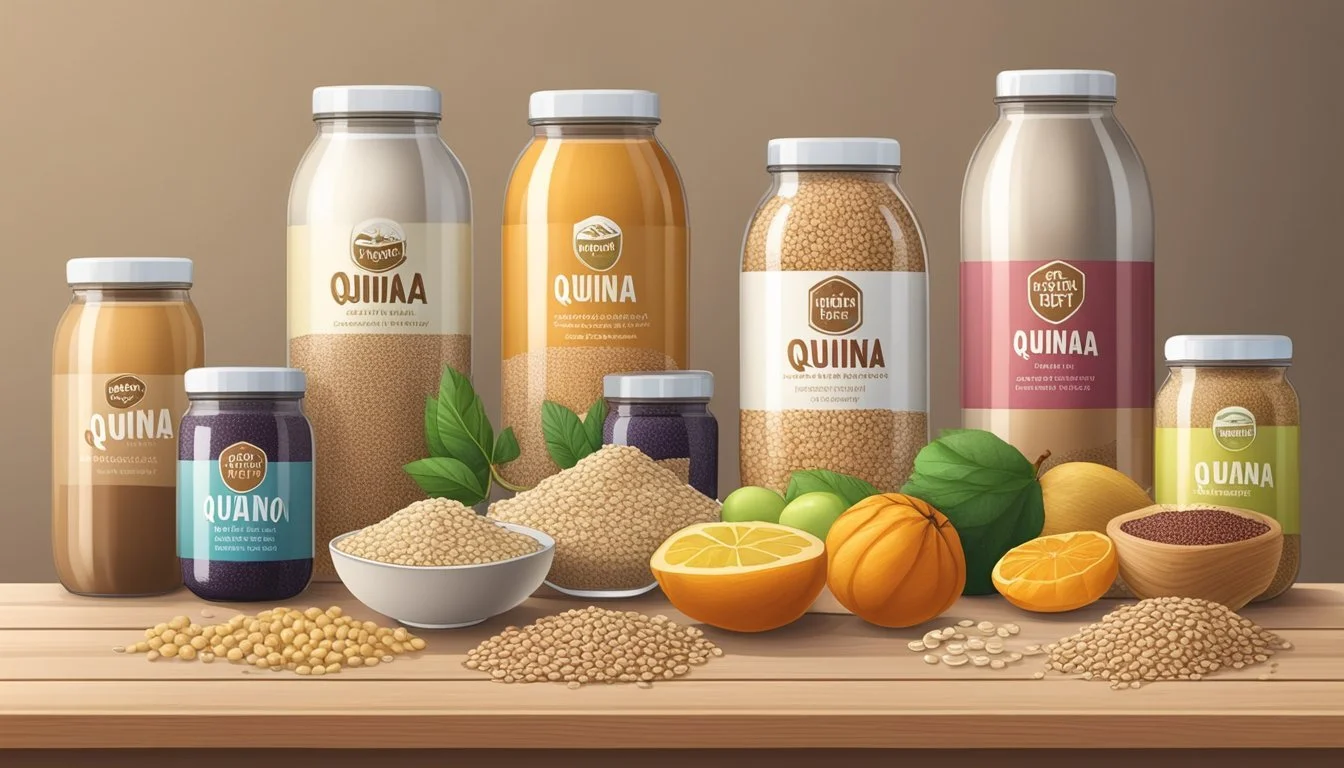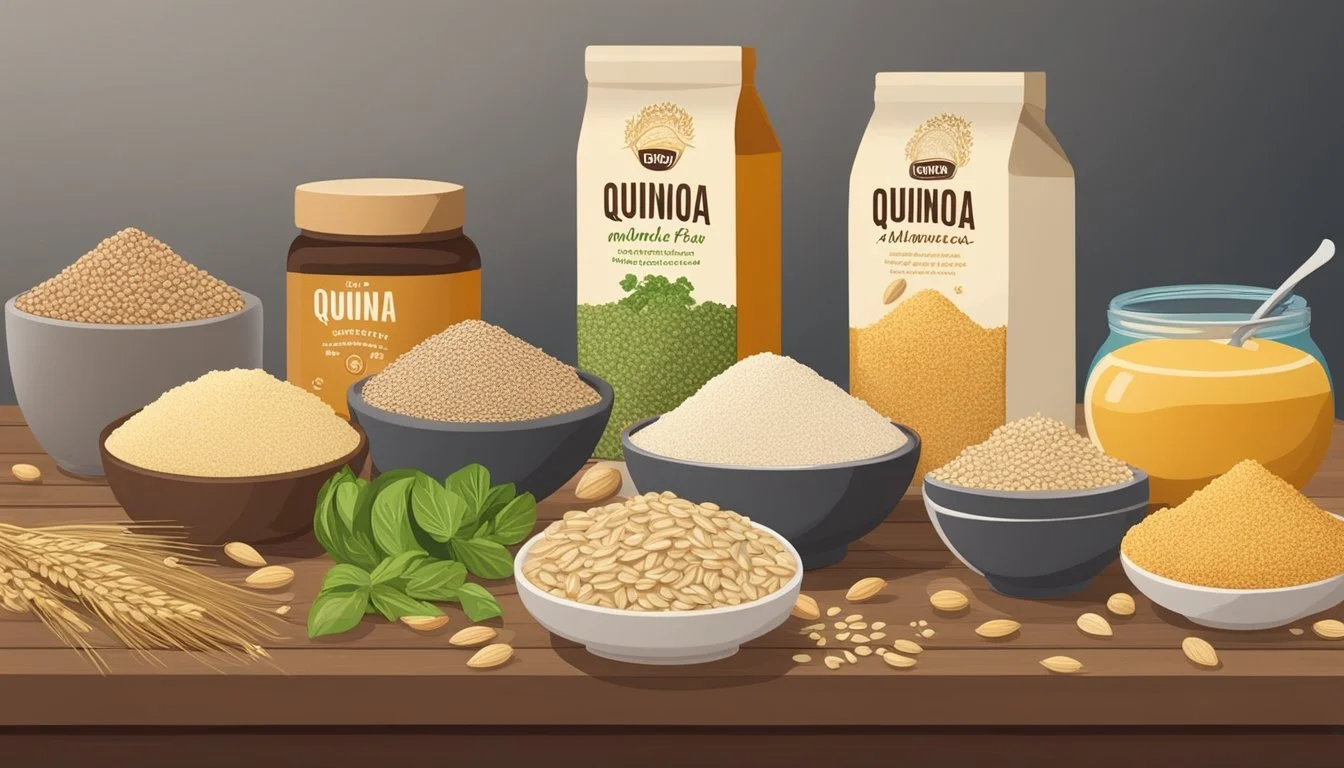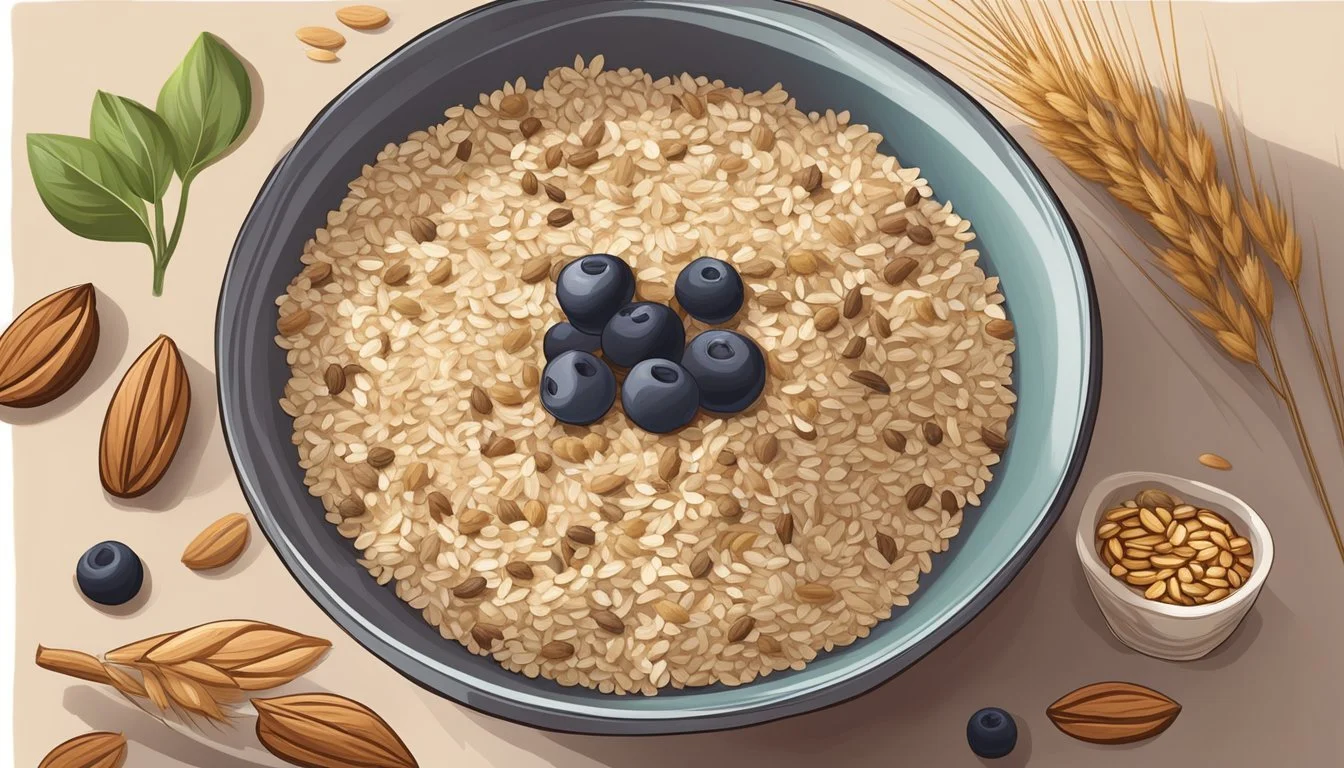Oat Substitutes
Top Alternatives for Baking and Cooking
Oatmeal is a staple breakfast choice known for its health benefits and versatile nature. However, not everyone can enjoy oats because of dietary restrictions, personal preferences, or simply for the sake of variety. This has led to the rise in popularity of oat substitutes that can offer similar nutritional profiles and textures. They provide a suitable alternative for those looking to diversify their breakfast options or for those who are sensitive to gluten, which oats can sometimes be contaminated with.
Several grains and seeds serve as excellent oatmeal alternatives due to their rich nutritional content and ease of preparation. Quinoa, for instance, is a high-protein option that comes with a nutty flavor, making it a favored choice for a warm and comforting breakfast. Similarly, buckwheat offers a whole-grain option that maintains blood sugar levels and is heart-healthy. These alternatives not only open the door to a variety of flavors and textures but also cater to the nutritional needs and culinary aspirations of a diverse population.
Health Benefits of Oat Substitutes
Oat substitutes can offer a diverse range of health benefits similar to oats, with varying degrees of protein and fiber content, as well as a rich supply of nutrients. These alternatives can be particularly valuable for individuals with dietary restrictions or those seeking to enhance their nutritional intake.
Heart Health and Cholesterol Control
Oat substitutes such as quinoa and flaxseeds are known for their heart-healthy benefits. These alternatives often contain omega-3 fatty acids, which are important for cardiovascular health. The fiber content in many oat substitutes can also assist with cholesterol control by aiding in the removal of LDL cholesterol from the body.
Protein and Fiber Content
Alternatives to oatmeal, like quinoa and chia seeds, are high in protein, making them an excellent choice for a muscle-building diet or for those requiring higher protein intake. They are also rich in dietary fiber, which contributes to satiety, digestive health, and stable blood sugar levels.
Oat Substitute Protein Content Fiber Content Quinoa Good source High Chia seeds High Very high Hemp seeds High High Flaxseeds Moderate High
Nutritional Value
Substitutes for oats are often dense in vital nutrients, delivering an abundance of vitamins and minerals. These can include iron, magnesium, and calcium, as well as B vitamins, vitamin E, and antioxidants. Elements such as manganese and phosphorus are also present, contributing to bone health and energy metabolism. These nutrients enhance the overall nutrition profile of a diet when oat substitutes are included.
Chia seeds: Rich in antioxidants, calcium, and manganese.
Quinoa: Contains all nine essential amino acids and a variety of B vitamins.
Flaxseeds: Source of lignans, which have antioxidant properties, and vitamin E.
Identifying Gluten-Free Alternatives
When seeking out gluten-free alternatives to oats, one must consider a variety of grains and seeds, understand the risks of cross-contamination, and be aware of labeling and safety measures.
Gluten-Free Grains and Seeds
Individuals looking for oat substitutes have several gluten-free options. Certain grains and seeds serve this purpose well due to their nutritional profile and cooking characteristics that are similar to oatmeal.
Quinoa: This versatile grain cooks quickly and offers a complete protein, making it a substantial breakfast option.
Buckwheat: Despite its name, buckwheat is gluten-free and has a robust flavor suitable for baking and hot cereals.
Amaranth: Amaranth's tiny grains cook into a porridge with a comforting, creamy texture.
Chia Seeds: Chia seeds can be boiled to create a gelatinous and fiber-rich porridge.
Brown Rice: A good source of fiber, brown rice can be cooked into a soothing breakfast dish.
For gluten-free baking, these alternatives can be used to add texture and nutritional value to recipes.
Understanding Cross-Contamination
Cross-contamination is a significant concern for individuals with gluten intolerance or celiac disease. Even if a grain is inherently gluten-free, it can become contaminated with gluten if processed in facilities that also handle wheat or other gluten-containing grains.
Gluten-free label: Products should only be considered safe if they bear a certified gluten-free label.
Dedicated facilities: Seek out manufacturers that use gluten-free processing lines or dedicated gluten-free facilities.
Labeling and Safety Measures
Correct labeling is critical for the safety of gluten-sensitive individuals. In the United States and many other countries, products labeled as gluten-free must meet strict standards regarding gluten content.
Certification: Look for official gluten-free certification on packaging.
Ingredient lists: Always read ingredient lists thoroughly to check for gluten-containing additives or ingredients.
By choosing appropriate gluten-free grains and seeds, being vigilant about cross-contamination risks, and following safety measures through careful product selection, individuals can enjoy a variety of oatmeal substitutes without compromising their gluten-free lifestyle.
Nutrient-Dense Oat Alternatives
When exploring oat substitutes, one aims for options that are rich in nutritional value yet adaptable to various recipes. These alternatives are often grouped into seeds and nuts, whole grains and flakes, and grain-free options, each offering unique health benefits and culinary versatility.
Seeds and Nuts
Seeds and nuts are concentrated sources of healthy fats, proteins, and essential nutrients. They can be used whole, ground into meals, or made into flakes for easy oat substitution.
Chia Seeds: Deliver high amounts of omega-3 fatty acids and can absorb liquid to create a texture similar to oatmeal.
Hemp Seeds: Provide complete protein and an optimal ratio of omega-6 to omega-3 fatty acids, making them a nutritional powerhouse.
Pumpkin Seeds: Are rich in magnesium and zinc, and add a nice crunch to dishes when used as an oatmeal topping.
Sunflower Seeds: Offer vitamin E and B vitamins, contributing to a well-rounded diet.
Incorporating nuts like almonds into recipes can enhance the content of healthy fats, providing both flavor and nutrition. Almond flour or almond meal can simulate the bulk of oats in baked goods, while maintaining a lower carbohydrate profile.
Whole Grains and Flakes
Whole grains serve as excellent replacements for oats due to their similar textures and nutrient profiles. They are generally high in fiber and provide sustained energy.
Quinoa Flakes: Exhibit a nutty flavor and are gluten-free, high in protein, and contain all nine essential amino acids.
Buckwheat Flakes: Not actually wheat but a gluten-free seed, buckwheat flakes are beneficial for heart health and blood sugar control.
Rice Flakes: Are easily digestible and can be a good option for those with sensitive stomachs or allergies.
Barley: Though not gluten-free, barley is a whole grain that provides a chewy texture and is high in fiber.
Millet is another versatile whole grain that can be used in a multitude of dishes that traditionally use oats, from cereal to baking.
Grain-Free Options
For those following a grain-free diet, there are still ample oat alternatives that are nutrient-dense and adaptable to various recipes.
Coconut Flakes: Offer a burst of flavor and a unique texture. They are a source of healthy fats but should be used in moderation due to their higher fat content.
Flaxseed Meal: Provides omega-3 fatty acids and fiber. It can be used to create a porridge-like consistency when combined with liquids.
These options not only cater to those with dietary restrictions but also add a variety of flavors and textures to everyday meals.
Cooking and Baking with Oat Substitutes
When embracing oat substitutes in cooking and baking, one encounters a wealth of gluten-free options that cater to a variety of textures and flavors. These alternatives not only enhance recipes but also cater to dietary restrictions.
Savory Meals and Porridge
For savory dishes and porridge, quinoa is an excellent substitute for oats; its small, bead-like appearance and nutty flavor make it ideal for pilafs and savory porridge. Amaranth is another such alternative, which is rich in protein and can thicken dishes effectively.
Quinoa: 1 cup rinsed quinoa simmered with 2 cups water for about 15 minutes, until tender.
Amaranth: Combine 1 cup amaranth with 3 cups water, cook for 20-25 minutes.
Baking Applications
Bakers seeking oat alternatives have several choices:
Quinoa Flakes: Use a 1:1 ratio for oats in most baking recipes for cookies, bars, and muffins.
Buckwheat Groats: Grind into flakes and substitute for oats on a 1:1 ratio.
Almond Meal: A finer substitute with a nutty, sweet flavor, suitable for desserts and bread.
For gluten-free baking, these substitutes help maintain a chewy texture and contribute to the structure of baked goods.
No-Bake Recipes
Oat substitutes also shine in no-bake recipes. Here are some ideal options:
Chia Seeds: Known for gelatinous qualities when mixed with liquids; use in place of oats to add a unique texture to puddings and parfaits.
Ground Flaxseed: Mix with water to create a binding substitute in energy balls and other no-bake items.
Boldly explore these oat substitutes to revolutionize your cooking and baking repertoire with new textures, flavors, and gluten-free options.
Flavor and Texture Profiles
In selecting substitutes for oats, one must consider how these alternatives mimic or differ from the flavor and texture profiles that oats naturally provide.
Sweet and Savory Enhancers
Substitutes for oats come with a variety of flavor profiles that can enhance both sweet and savory dishes. Honey and maple syrup serve as natural sweeteners that can complement the taste of oat alternatives in breakfast porridge or baking recipes. These sweeteners not only add to the flavor but can also contribute to a moist, chewy texture, similar to what oats provide.
Honey: Adds a rich, floral sweetness; perfect for drizzling over oat substitutes in porridge or using in baking.
Maple Syrup: Offers a distinct, natural sweetness with a hint of caramel; suitable for sweet oatmeal-like dishes and baking.
Creating Desired Consistencies
Consistency is key when selecting an oat substitute. Some alternatives may absorb liquids differently, resulting in a variety of textures from creamy to chewy. For instance, buckwheat groats can replicate the chewy texture of steel-cut oats, especially when toasted prior to simmering. A liquid-to-groat ratio of 2:1 is recommended for achieving a desirable consistency.
Buckwheat Groats: Toast before simmering to enhance their nutty flavor and achieve a tender, chewy texture.
Comparison to Oatmeal
When comparing substitutes to oatmeal, it's important to consider how closely they mimic the flavor and texture of the original. Oats offer a unique combination of a mild, nutty flavor and a pleasantly chewy texture in porridge. Alternatives such as barley flakes and quinoa can provide similar taste profiles and textures, with barley flakes offering a likeness in texture and quinoa offering a complete protein profile.
Barley Flakes: Can be used to replicate the texture and mild taste of oats.
Quinoa: Provides a protein-rich option with a nutty flavor that can serve as a gluten-free porridge base.
Dietary Considerations
When considering oat substitutes, one must account for various dietary needs, including carbohydrates, protein content, and the food's impact on blood sugar levels.
Low-Carb and Keto-Friendly Options
For individuals on a ketogenic diet or those seeking low-carb options, traditional oats may not fit their dietary regimen due to their higher carb content. Instead, they can opt for seeds like flaxseeds or chia seeds, which are low in carbs yet provide a similar texture when used in recipes.
Keto-friendly seeds:
Flaxseeds: Typically contain less than 1 gram of net carbs per tablespoon.
Chia Seeds: Provide about 2 grams of net carbs per tablespoon.
High-Protein Diets
High-protein substitutes not only support muscle maintenance and growth but also aid in better satiety and controlled digestion. Quinoa and buckwheat stand out as excellent choices, offering more protein per serving compared to oats.
Protein content comparison:
Quinoa: Around 8 grams of protein per cooked cup.
Buckwheat: Approximately 6 grams of protein per cooked cup.
Managing Blood Sugar Levels
To mitigate spikes in blood sugar, foods with a lower glycemic index are preferred. Oat substitutes like barley or legumes can be beneficial due to their complex carbohydrates and high fiber content, which provide a steadier release of glucose into the bloodstream. It's crucial to choose substitutes that support stable digestion and minimize blood sugar fluctuations.
Fiber-rich substitutes:
Barley: Contains soluble fiber that helps manage blood sugar levels.
Legumes: Provide a slow release of energy and can contribute to consistent blood sugar levels.
Recipe Adaptation and Substitutions
When adapting recipes that traditionally include oats, it is essential to understand how different substitutes can affect texture, taste, and moisture content. Careful adjustments to liquid ratios and consideration for alternative sweeteners and add-ins will ensure the success of the revised recipe.
Substituting Oats in Recipes
Different types of oats—such as rolled oats, steel-cut oats, and oat flour—contribute varying textures and flavors to recipes. In oatmeal cookies, for instance, one can substitute rolled oats with alternatives like quinoa flakes or buckwheat flakes in a 1:1 ratio. For a gluten-free alternative, amaranth or millet can replace oats in porridge dishes, mimicking the heartiness while also providing essential nutrients.
Adjusting Liquid Ratios
When using alternatives to oats, attention to liquid ratios is crucial. Substitutes like quinoa might require more liquid and longer cooking times compared to instant oats. It's essential to start with the recommended ratio on the package and adjust as necessary. For example:
Substitute Starting Ratio (Substitute) Note Quinoa Flakes 1:2 May need more liquid Buckwheat Groats 1:1 Adjust to desired consistency Almond Meal Use less liquid It absorbs less moisture
Alternative Sweeteners and Add-Ins
Sweeteners and add-ins such as fruits, nuts, shredded coconut, or chocolate chips enhance the flavor profile of oat-based recipes and their substitutes. Bananas can be used not only for sweetness but also to bind ingredients together in place of oat flour. Non-dairy liquids like almond milk add richness and are excellent for adjusting consistency. To maintain the aroma, spices like cinnamon and vanilla are reliable choices.







